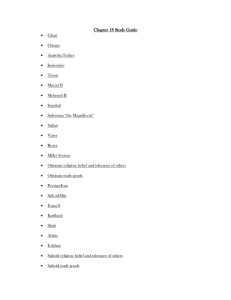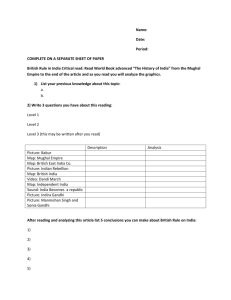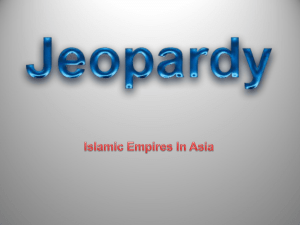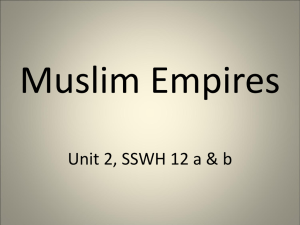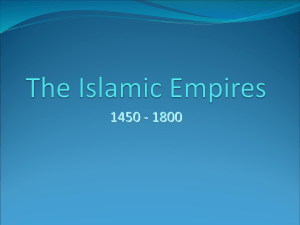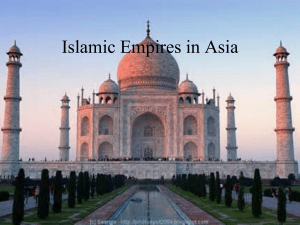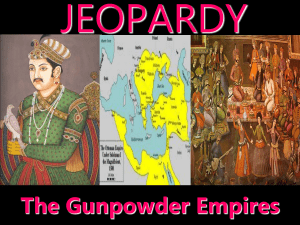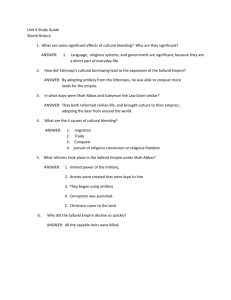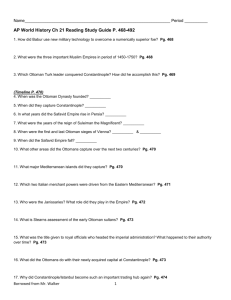West and South Asia: The Islamic World Powers, ca 1450
advertisement
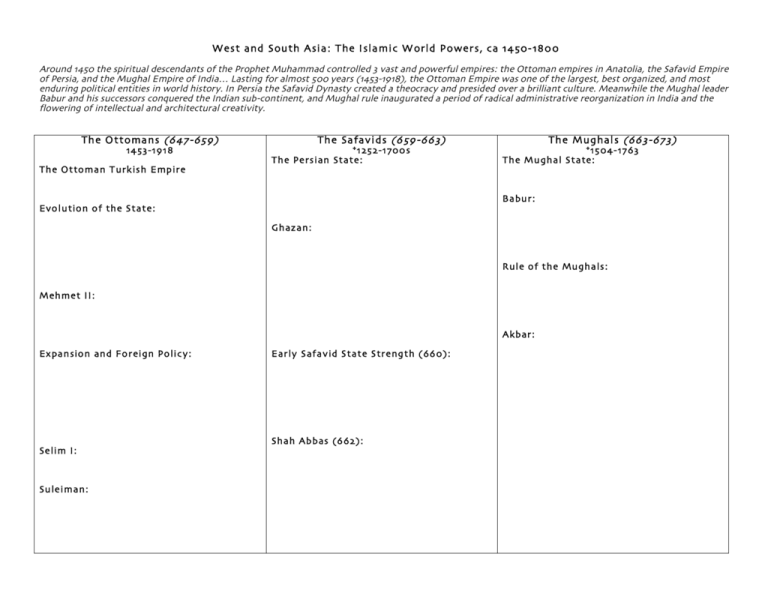
Wes t and Sou th Asi a: The I sla mi c W orld P ower s, c a 1 4 50- 180 0 Around 1450 the spiritual descendants of the Prophet Muhammad controlled 3 vast and powerful empires: the Ottoman empires in Anatolia, the Safavid Empire of Persia, and the Mughal Empire of India… Lasting for almost 500 years (1453-1918), the Ottoman Empire was one of the largest, best organized, and most enduring political entities in world history. In Persia the Safavid Dynasty created a theocracy and presided over a brilliant culture. Meanwhile the Mughal leader Babur and his successors conquered the Indian sub-continent, and Mughal rule inaugurated a period of radical administrative reorganization in India and the flowering of intellectual and architectural creativity. Th e O ttoma ns (6 47 -659) 1453-1 91 8 Th e Otto man T urk is h E mp ir e Th e Sa favi ds (6 59 -66 3) *1 25 2-1 700 s Th e Pers ian State: Th e Mughal s (66 3-67 3) *15 04-17 63 Th e M u gh al S tate: Babu r: Evo lu tio n o f th e S tate: Gh az an: Rule o f th e Mu gh als: M eh met I I: Akb ar: Ex pan sio n an d Fo r eign Po lic y: E ar ly S afav id S tate S tr eng th (66 0): Sh ah Ab b as (6 62): Selim I: Su leiman: Th e Otto mans in Wo r ld A ffairs (6 51 ): Is fah an: Sh ah J ah an: Taj M ah al: Otto man Soc iety: Safavid So ciety (flo wers , g ar d en s, and carp ets ): Tr ad e an d C ommerc e: Eu ro pean Riv alr y fo r I n dian Tr ade: Cu ltu r al "F lo wer in g": Fac to r y-For t Soc ieties: Ris e of th e Br itis h Eas t I nd ia Co mp an y: Th e Otto man Decline: Th e S afivid Dec line: Th e M u gh al Declin e:
